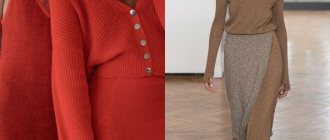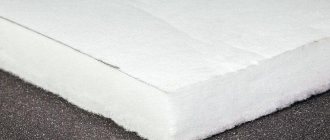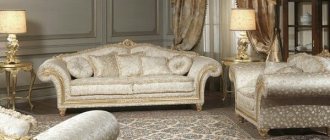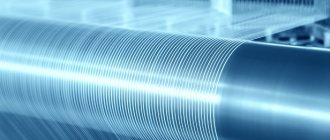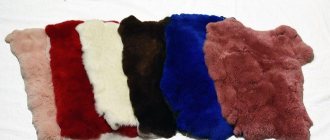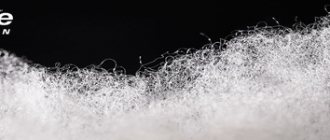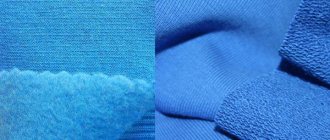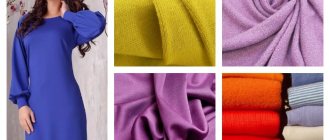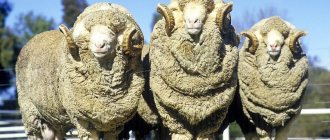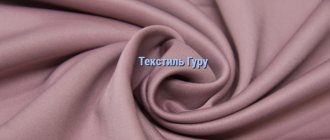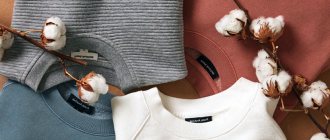Insulation for jackets is divided into two types: natural and artificial. The first includes goose down, which is considered expensive and not the most practical option. In contrast, synthetic filler is light, cheap, and provides excellent heat retention. These characteristics have determined the widespread popularity of holofiber when sewing down jackets, parkas and other types of outerwear.
Synthetic materials are often considered inexpensive, lower quality substitutes for natural ones. But in the case of holofiber, we often have to talk about advantages than disadvantages. How good this insulation is, warm or not, will be discussed below.
What is holofiber?
This is a synthetic non-woven fiber of the polyester group. The structure is very similar to padding polyester, but differs in the absence of the use of glue in production. Holofiber is based on spiral-shaped silicone fiber, which is held together by soldering at high temperature. The result is long fibers.
What is holofiber?
Production of workwear
Under the “holofiber” trademark, a number of materials are produced that are distinguished by high heat-protective qualities and are used as insulating linings in the production of clothing.
Workwear made using this insulation is ideal for people performing physical activity in harsh weather conditions (critically low temperatures).
Low hygroscopicity allows the material to maintain plasticity at low temperatures and not be brittle .
Such workwear has high breathability, allowing you to maintain thermal balance, not impede air access to the body and remove carbon dioxide from the space under clothing (its high level leads to a deterioration in a person’s well-being and reduces his performance).
Often used in the manufacturing process:
- workwear;
- insulated clothing;
- expedition equipment.
Insulation materials of the “holofiber” brand are used in sewing workwear for the Ministry of Emergency Situations, Rosneft, Norilsk Nickel, Lukoil, Tatneft, etc.
Holofiber filler: pros and cons
This material has many positive properties:
- Light weight
- Excellent thermal conductivity and heat retention ability
- Low price
- Hypoallergenic
- Does not absorb odors
- Not electrified
This insulation has no negative aspects. Except that it is slightly inferior in heat capacity to a goose feather.
Holofiber filler: pros and cons
Properties, characteristics
Holofiber has gained its popularity due to the properties it has. The main ones:
- Good air permeability.
- Does not retain foreign odors, because it has low adsorbing capacity.
- Has good heat-shielding properties.
- The fibers that make up the fabric are non-toxic, which allows it to be used for sewing children's clothing and bedding.
- Does not shrink after washing, because polymer fibers are tear-resistant. When compressed, it quickly restores its shape.
Holofiber: what temperature and weather is it designed for?
Now there is a huge amount of outerwear with holofiber on the market. This is due to the low price. A down jacket costs one and a half times cheaper than a natural one. At the same time, it is not inferior in quality. Before answering about temperature standards, it is worth deciding on the density of the filler. The minimum operating temperature also depends on this figure.
Temperature standards:
- Density 100 g/sq.m. — from +10°С to +5°С
- Density 150 g/sq.m. — from +5°С to -10°С
- Density 200 g/sq.m. — from -10°С to -20°С
- Density 300 g/sq.m. – from -20°С to -30°С
Holofiber: what temperature and weather is it designed for?
Reviews
I bought myself a blanket made from holofiber on the advice of a friend. At first I was still skeptical about synthetics. But I really liked it. Warm, soft, maintains temperature. I want to buy another one for my relatives.
Elena, Smolensk
I bought myself a jacket for the winter. I don’t want to bother with down jackets, so I decided to use artificial insulation. The store advised me to buy it with holofiber. I'm happy with the purchase, it warms well in winter.
Mikhail, Nizhny Novgorod
I have two preschool children. I always try to buy them quality clothes. I heard a lot of positive reviews about holofiber, so I bought overalls with it for the children for the winter. The result is that they never got sick last winter.
Tatyana, Omsk
Originally posted 2017-12-21 06:37:34.
What is the difference between padding polyester and holofiber?
In principle, the material is made from the same fiber, but using different technologies. Sintepon is a type of silicone fiber, like holofiber, but all the fibers in it are glued. In holofiber, the threads are connected to each other by soldering at high temperatures without the use of glue. There is emptiness inside the fibers, which makes the material light and very warm. Thus, holofiber is much lighter and warmer than padding polyester.
What is the difference between padding polyester and holofiber?
What is warmer and better: holofiber or padding polyester, artificial and natural down?
Synthetic winterizer is not the best insulation, as it gets wet and accumulates moisture. At the same time, the material has a low thermal insulation rate. It is an order of magnitude higher than holofiber.
Natural down is a competitor to holofiber. Products made from it are as warm as possible. But down has one huge drawback - the price. In addition, down gets wet in rainy weather. There are also some difficulties when washing down jackets with natural feathers. If we take into account all these indicators, then holofiber is an ideal option.
What is warmer and better: holofiber or padding polyester, artificial and natural down?
Average prices
The cost of holofiber is affected by the variety. It is cheaper than Thinsulate, but more expensive than padding polyester. Average retail price:
| Variety | Unit | price, rub. |
| Volumetric | meter | 86 — 93 |
| Software | meter | 66 — 78 |
| PAFS | kg | 230 — 238 |
| Hard | meter | 247 — 263 |
Is it possible and how to wash holofiber in a washing machine?
Yes, products made from this filler can be safely machine washed. In this case, it is worth taking into account the features of the upper fabric. After all, holofiber can be washed even at a temperature of 80 °C. But due to the fact that down jackets are dyed and made of raincoats, the optimal washing temperature is 40 °C. At the same time, the products can be wrung out, because holofiber straightens out perfectly after washing and spinning. It doesn't need to be shaken off like fluff.
You can wash not only down jackets, but also blankets, pillows and bedspreads with holofiber. These are the products that can get dirty. Only now there is no need to take them to dry cleaning. You can wash it yourself in a washing machine.
Is it possible and how to wash holofiber in a washing machine?
Holofiber is an excellent filler that will serve as an excellent alternative to natural fluff. It's just as warm, but much cheaper.
ℹ️
In response to your request, we provide the following data, on the basis of which you can develop a new standard of insulated corporate clothing using high-tech synthetic insulation of domestic production - non-woven material "Holofiber".
| Excerpt from the “Brief information on the main types of insulating fabrics used in the manufacture of clothing”: “...Summing up all the indicators, we can conclude that the domestic Holofiber fabric is superior to domestic fabrics and the imported Thinsulate fabric. According to its properties, the Holofiber fabric provides the heat-protective requirements for insulated clothing in accordance with GOST R 12.4.236-2007.”... (General Director of JSC Central Research Institute of Shp, Candidate of Technical Sciences S.K. Lopandina, Head of Laboratory Materials Science, Ph.D. Kirillova L.I., June 2009) |
Insulation
"Holofiber".
A variety of
the recommended “Holofiber” insulation is SOFT.
Manufacturer:
Russia, Moscow.
Composition:
100% polyester, polyester (high-quality virgin fiber imported).
Production method:
fiber connection, thermal, without the use of glue, adhesive compounds, emulsions.
Manufacturing Features:
Aerodynamic, 3-D oriented crimped fibers.
In addition to the delivery
: a hanging paper label with a description of the properties and qualities, a sewn-in woven label, a description booklet with information about the operational characteristics and practicality properties of NM "Holofiber".
Similar types of recommended insulation of the Holofiber brand are currently used in such structures as the Ministry of Emergency Situations, Gazprom, Norilsk Nickel, Rosneft, Lukoil, Tatneft, etc.
When compiling this table, the results of many years of research and testing in the Russian Federation and abroad were used (Central Research Institute of the Garment Industry, Research Institute of Nonwoven Materials, Research Institute of Occupational Medicine, SCS "Silk", Federal State Unitary Enterprise All-Russian Research Institute of Fire Defense, LLC "Miranda-T", "Gas Safety", " Mendeleev CSM",
Centexbel (Belgium), Hohenstein (Germany), etc.);
experimental socks in various regions of the Russian Federation, the CIS, including regions 1B-IV “Arctic”, as well as the System of Occupational Safety Standards “SPECIAL CLOTHING FOR PROTECTION FROM LOW TEMPERATURES”.
Technical requirements. GOST R. Characteristics of recommended Holofiber materials depending on densities (g/m2)
N. B. The following data on the properties, qualities and performance characteristics of Holofiber insulation are for informational purposes only for manufacturers of protective insulated workwear and uniforms. The final representative results in relation to ready-made clothing sets according to the standards of your Company can be obtained based on the results of comprehensive studies of the corresponding clothing packages and experimental wear of the sets in the climatic zones specified in the technical specifications. The data may have deviations up or down depending on the final materials approved by the clothing manufacturer for the use of other materials (outer fabric, lining, wind protection, membrane, etc.); The influence can also be exerted by the peculiarities of tailoring products and design solutions.
| Name, article | Hollofiber SOFT 150 g/sq.m. | Hollofiber SOFT 200 g/m2. | Hollofiber SOFT 250 g/m2. | Holofiber Volumetric 200 g/m2 |
| Layer thickness, cm | +-1,5 | +-2,0 | +-2,5 | +-4,5 |
| Canopy width, cm | 150 | 150 | 150 | 150 |
| Finishing, protective properties | Calendering | Calendering | Calendering | Without calendering |
| Thermal resistance of one layer of material under natural convection conditions, m2 C/W | 0,522 | 0,593 | 0, 986 | 0,582 |
| Air permeability, dm3/m2s | 5 | 5 | 5 | 6 |
| Hygroscopicity,% | No more than 1% | No more than 1% | No more than 1% | 0,6-0,9% |
| Resistance to breaking loads, N | 10-20 | 10-20 | 10-20 | 5-15 |
| Regulatory documents on the basis of which non-woven material and insulation are produced | TU 8391-002-72922610-05 | TU 8391-002-72922610-05 | TU 8391-002-72922610-05 | TU 8391-001-72922610-05 |
| Type of permitted cleaning and drying | All permissible, applicable to workwear (including drum washing and drying) | All permissible, applicable to workwear (including drum washing and drying) | All permissible, applicable to workwear (including drum washing and drying) | All permissible, applicable to workwear (including drum washing and drying) |
| Permitted maximum cleaning temperature | Depending on the recommendations of the manufacturers of the upper/lining fabrics used | Depending on the recommendations of the manufacturers of the upper/lining fabrics used | Depending on the recommendations of the manufacturers of the upper/lining fabrics used | Depending on the recommendations of the manufacturers of the upper/lining fabrics used |
| Cleaning restrictions | No limits | No limits | No limits | No limits |
| Guaranteed number of washes | 12 (maximum number when testing for this profile) | 12 (maximum number when testing for this profile) | 12 (maximum number when testing for this profile) | 12 (maximum number when testing for this profile) |
| Shrinkage after washing | No more than 2-3% | No more than 2-3% | No more than 2-3% | No more than 3-5% |
| Migration | Absent | Absent | Absent | Acceptable minor |
| Hygienic and environmental safety | Certificate of conformity, OEKO-TEX Standard 100 class 1 (direct contact with skin) | Certificate of conformity, OEKO-TEX Standard 100 class 1 (direct contact with skin) | Certificate of conformity, OEKO-TEX Standard 100 class 1 (direct contact with skin) | Certificate of conformity, OEKO-TEX Standard 100 class 1 (direct contact with skin) |
| Staticity, ohm | No more than 10 X7 | No more than 10 x11 | ||
| Resistance to heat treatment and thermal effects, t | Withstands thermal transfer transfer by press, t 130-135 C | Withstands thermal transfer transfer by press, t 130-135 C | Withstands thermal transfer transfer by press, t 130-135 C | No tests carried out |
| Bleach resistance | PCE resistant | PCE resistant | PCE resistant | PCE resistant |
| Flammability | Does not spread flame | Does not spread flame | Does not spread flame | Does not spread flame |
| Toxicity | Non-toxic | Non-toxic | Non-toxic | Non-toxic |
| Volume restoration | ||||
| Production times, waiting for products | Upon request, from stock, no waiting | Upon request, from stock, no waiting | Upon request, from stock, no waiting | Upon request, from stock, no waiting |
| Packaging, preparation for transportation | Branded two-layer, polyethylene, vacuum sealed | Branded two-layer, polyethylene, vacuum sealed | Branded two-layer, polyethylene, vacuum sealed | Branded two-layer, polyethylene, vacuum sealed |
| Winding in a roller, m | 60 | 40 | 35 | 25 |
| Roller width, m | 1,5 | 1,5 | 1,5 | 1,5 |
| Quality control | ISO 9001 | ISO 9001 | ISO 9001 | ISO 9001 |
| Evenness in density | Change no more than 0-5% | Change no more than 0-5% | Change no more than 0-5% | Change no more than 0-7% |
| Additional cutting field per roll, cm | Width: +1-2%, length per roll: +50 cm. | Width: +1-2%, length per roll: +50 cm. | Width: +1-2%, length per roll: +50 cm. | Width: +1-2%, length per roll: +50 cm. |
| Odor retention | Doesn't hold odors | Doesn't hold odors | Doesn't hold odors | Doesn't hold odors |
| Patents, St. No. | 101 (well-known trademark), 358686 (combined trademark) | 101 (well-known trademark), 358686 (combined trademark) | 101 (well-known trademark), 358686 (combined trademark) | 101 (well-known trademark), 358686 (combined trademark) |
| Life time | acc. with specifications, exceeds the service life of other components and fittings | acc. with specifications, exceeds the service life of other components and fittings | acc. with specifications, exceeds the service life of other components and fittings | acc. with specifications, exceeds the service life of other components and fittings |
| Resistance to repeated compression, % | Not less than 71.5% | Not less than 74.6% | Not less than 72.7% | Not less than 67.8% |
| Price, including VAT | 74,65 | 99,12 | 125,50 | 74,81 |
